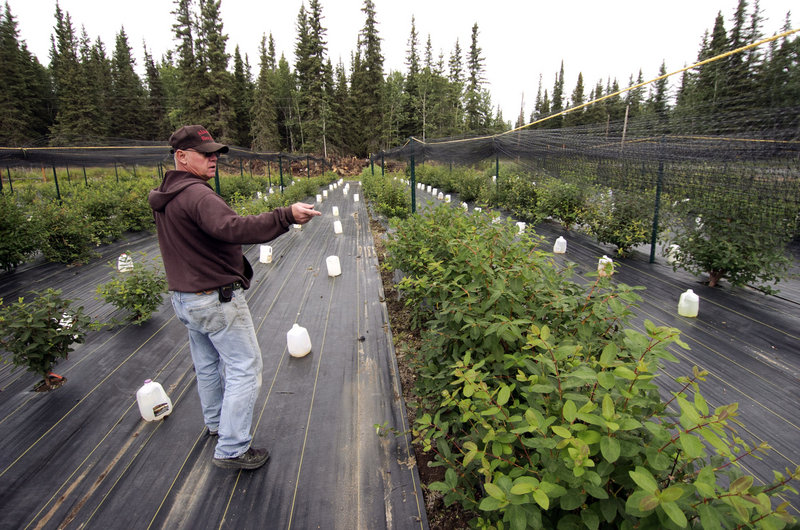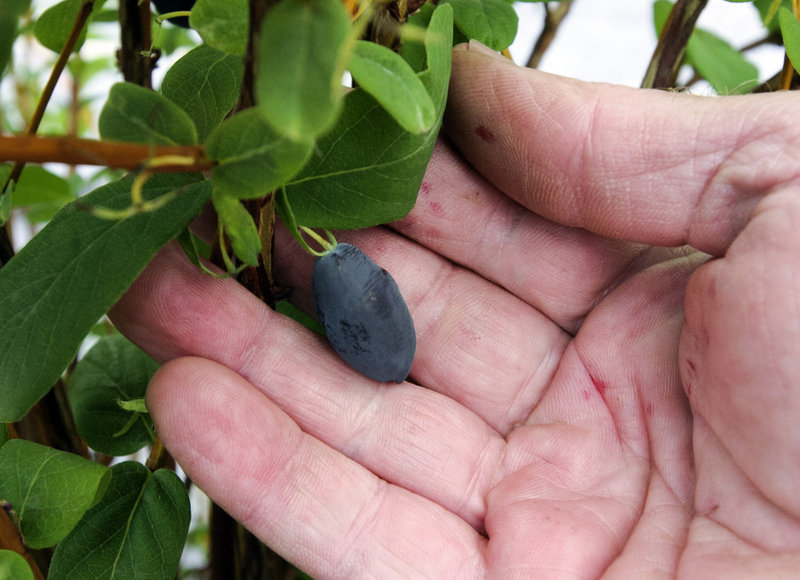KENAI, Alaska – Brian Olson says he will spend the rest of his life further cultivating what he said is the country’s new “super berry” — and he is thrilled.
The berries are “hardy, the fruit’s great, and I’m really excited for it because I think it can be a new commercial crop in this state,” he said.
The berry grows from the Japanese haskap plant, and because of its resiliency, it will be a significant contribution in a state that is not predominately known for its crop productions, Olson said.
“People will recognize it and they’ll know it and they’ll love it and there will be a lot of products out there for them to purchase,” he said.
Olson said he has cultivated a genetically unique product that is unlike any other berry. “A strawberry has a strawberry taste; a raspberry has a raspberry taste; a blueberry has a blueberry taste — this berry is multi-flavored,” he said.
He said it hits all his taste buds.
“When you put it in your mouth, you roll it around; you get the sweets, you get the sours, you get the tang, you get some zest,” he said.
The 57-year-old Soldotna resident and co-owner of Alaska Berries said the haskap has already been proven an Alaska hardy plant that can weather the state’s winters.
“We know it’s beyond the experimental part — it’s successful,” he said.
There are other berries grown in Alaska that are suitable for the state’s short and harsh growing season, but none, he said, rival the haskap for its health benefits.
The haskap berries trump blueberries, another “super berry,” in levels of antioxidants, phenols, Vitamin A and C, anthocyanins and bioflavinoids, he said.
On average, a one-year-old plant produces a handful of berries, he said. By year five, he said it can produce four to five pounds, and by maturity, 10 to 12 pounds.
Each plant has a 50-year life expectancy, he said, nearly doubling that of other berries he grows on his farm.
Cultivating its resiliency was simple, he said — they came that way from Japan.
The plant’s native land in Hokkaido, Japan, is similar to the environment of south-central Alaska. He said much of the work developing his new strains was in honing the berries’ taste, size, output and ease of being plucked.
“I’m just a farmer, and I was just taking the seeds from the best of the best, planting those and then seeing what kind of crops I could come up with,” he said.
Janice Chumley, a cooperative extension service IPM research technician for the University of Alaska Fairbanks, said she has worked with Olson over the years as he grew his berry farm.
“I think that the breeding that he’s done — it’s a good deal,” Chumley said. “They’re lovely looking plants, they produce well, they’re winter hardy — what’s not to like?”
She also said they have innate defenses to pests, which is why Olson has not had to use pesticides on the haskap plants.
Olson is working on a trademark for his new strains, and when he completes the paperwork in 2014 he plans to continue releasing new varieties every couple of years.
“If I live long enough, there might be 10 varieties that are named, patented, trademarked, that’ll be sold just like when you see plants for sale at nurseries,” he said.
He said his discovery will shape the rest of his life — it’s his masterpiece.
“I’m never going to be finished,” he said. “I’m going to continue researching these plants until the day I die.”
Send questions/comments to the editors.




Success. Please wait for the page to reload. If the page does not reload within 5 seconds, please refresh the page.
Enter your email and password to access comments.
Hi, to comment on stories you must . This profile is in addition to your subscription and website login.
Already have a commenting profile? .
Invalid username/password.
Please check your email to confirm and complete your registration.
Only subscribers are eligible to post comments. Please subscribe or login first for digital access. Here’s why.
Use the form below to reset your password. When you've submitted your account email, we will send an email with a reset code.